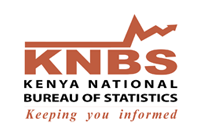 Consumer Price Index (CPI) increased from 142.75 points in October 2013 to 143.14 points in November 2013. The overall rate of inflation declined from 7.76 per cent to 7.36 per cent during the period. The Kenyan shilling appreciated against the Euro, the Japanese Yen, and the South African Rand, exchanging at an average of KSh 116.21, KSh 86.21, and KSh 8.43, while depreciating against other major currencies, as at the end of November 2013.
Consumer Price Index (CPI) increased from 142.75 points in October 2013 to 143.14 points in November 2013. The overall rate of inflation declined from 7.76 per cent to 7.36 per cent during the period. The Kenyan shilling appreciated against the Euro, the Japanese Yen, and the South African Rand, exchanging at an average of KSh 116.21, KSh 86.21, and KSh 8.43, while depreciating against other major currencies, as at the end of November 2013.
The average yield rate for the 91-day Treasury bills, which is a benchmark for the general trend of interest rates, increased from 9.58 per cent in September 2013 to 9.70 in October 2013. The inter-bank rates increased from 7.82 per cent to 10.60 per cent during the period. The Nairobi Securities Exchange share index (NSE 20) increased from 4,936 points in October 2013 to 5,101 points in November 2013, while the total number of shares traded decreased from 804 to 645 million shares during the same period. The total value of NSE shares traded declined from KSh 15.9 billion to KSh 13.1 billion. Broad money supply (M3), a key indicator for monetary policy formulation, increased from KSh 1,862.0 billion in September 2013 to 1,879.1 billion in October 2013. Money and Quasi-money (M2) expanded from KSh 1,593.4 billion to KSh 1,596.6 billion over the same period. Gross Foreign Exchange Reserves decreased from KSh 695.2 billion in September to KSh 671.3 billion in October 2013. Net Foreign Exchange Reserves decreased to KSh 366.4 billion over the same period.
